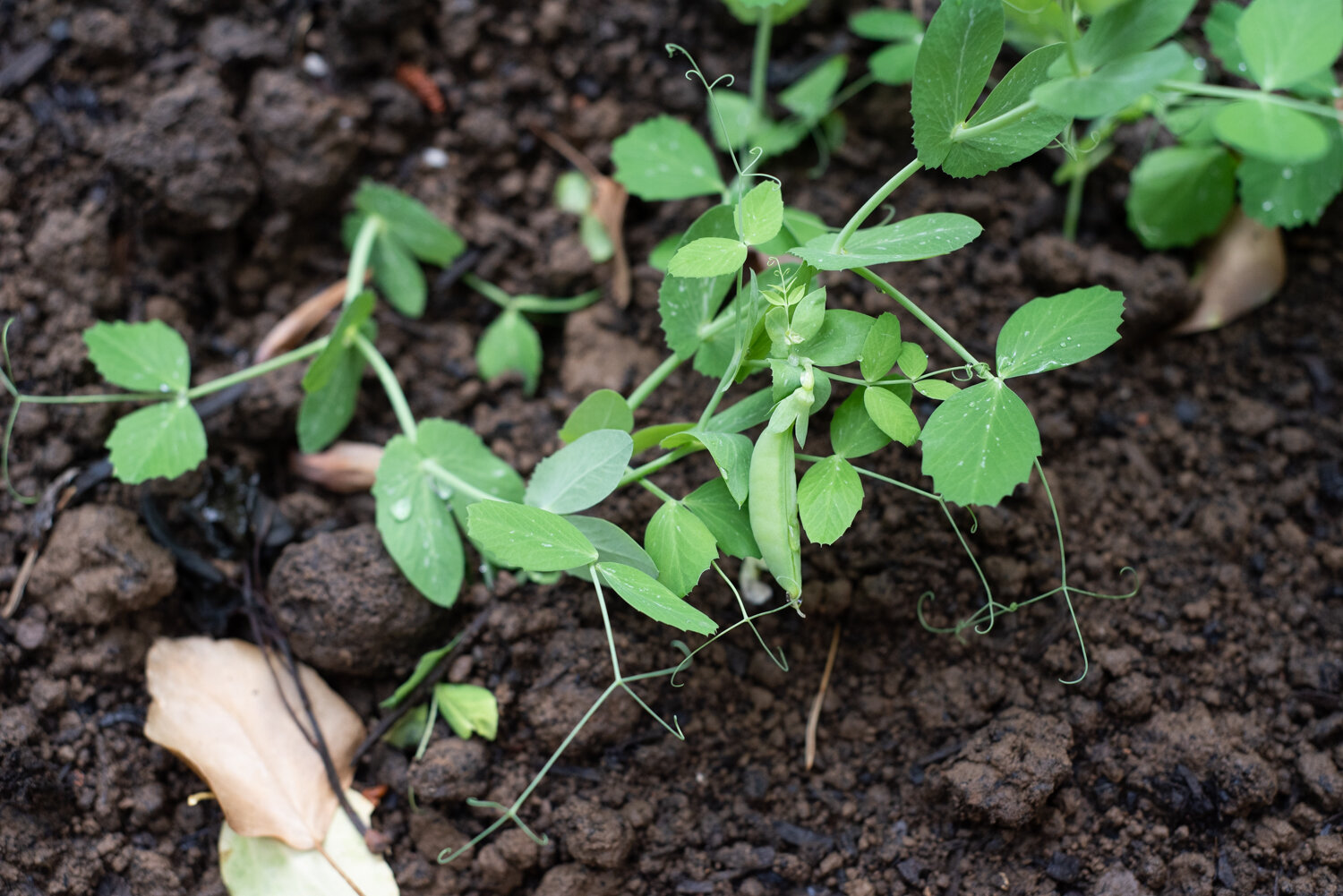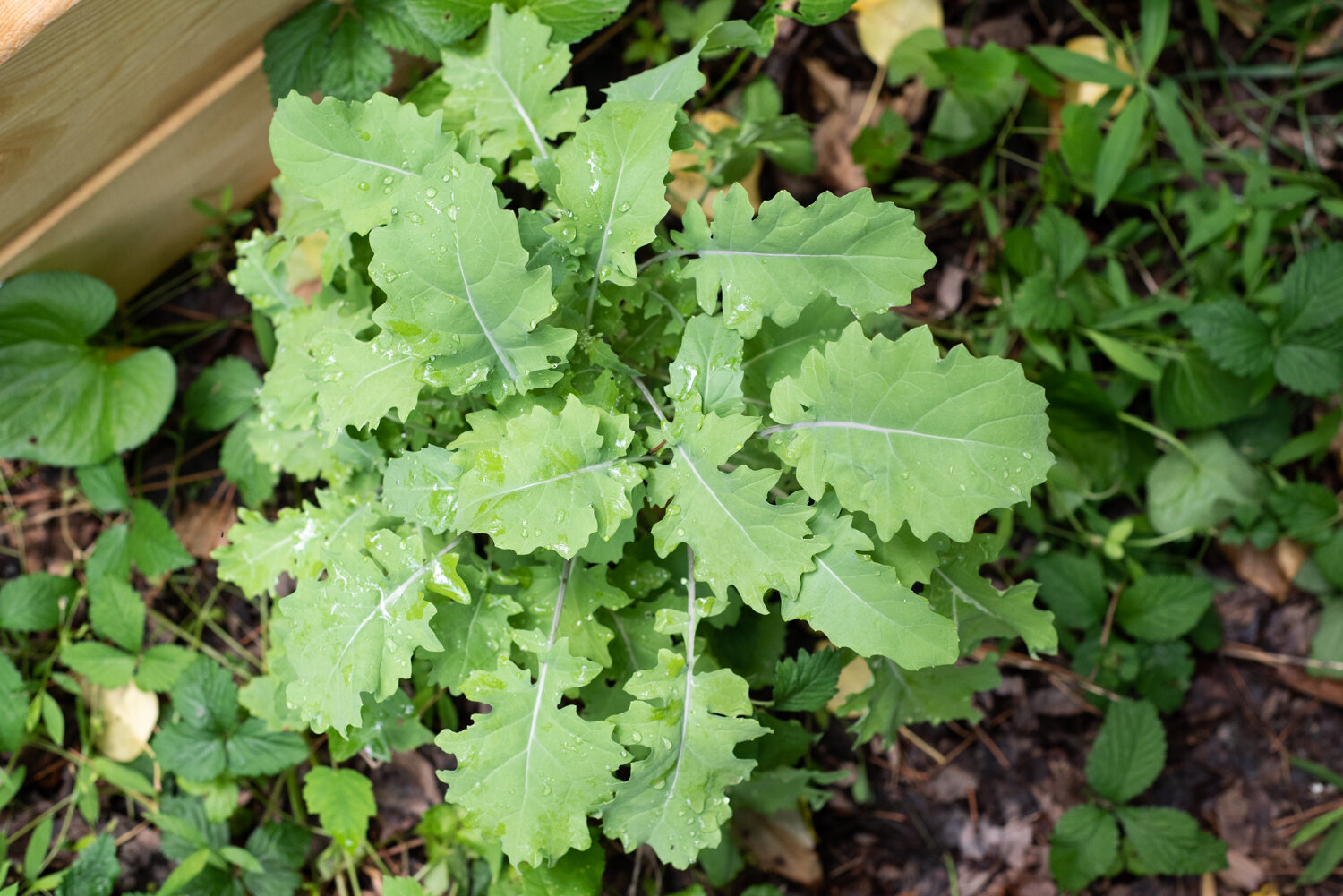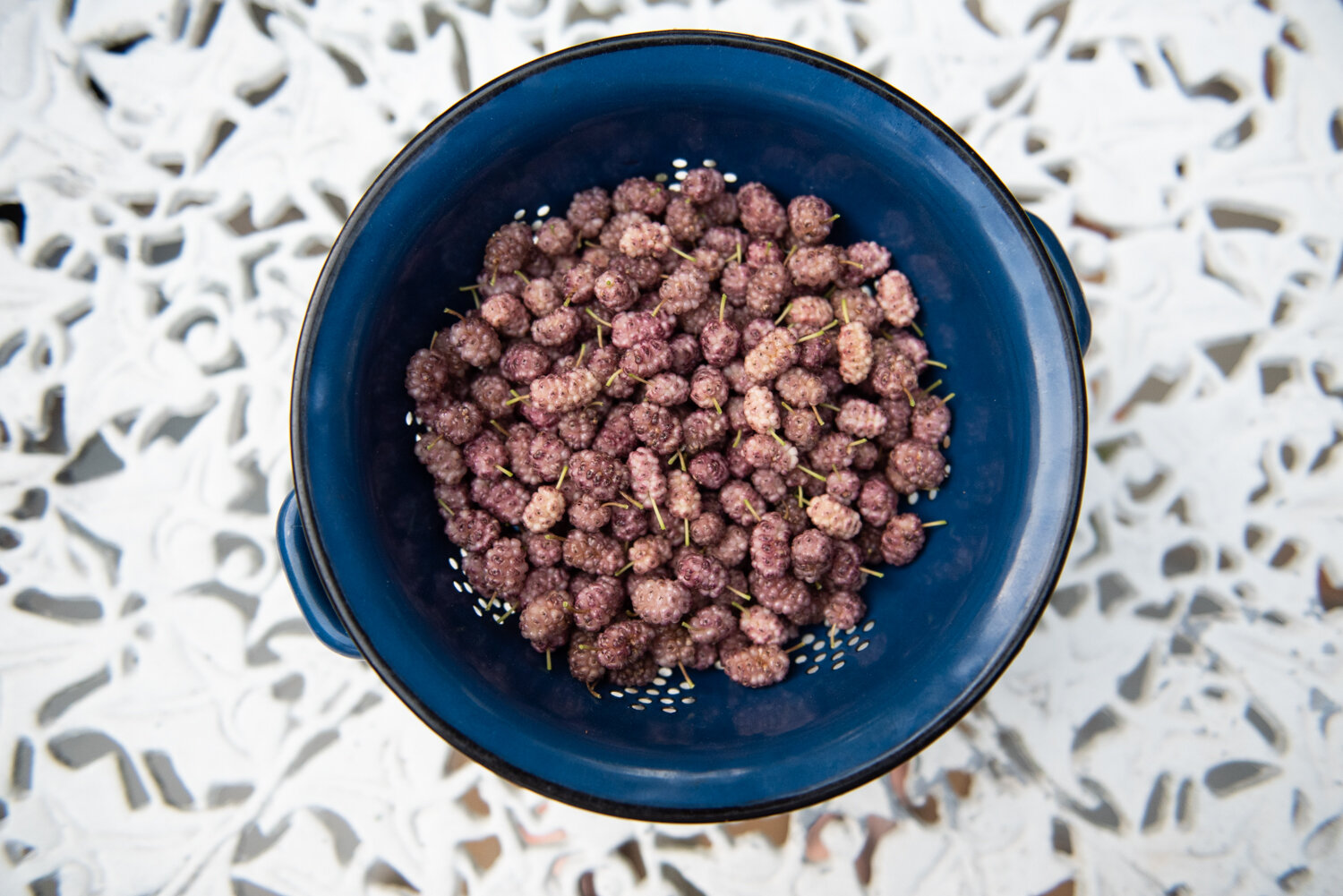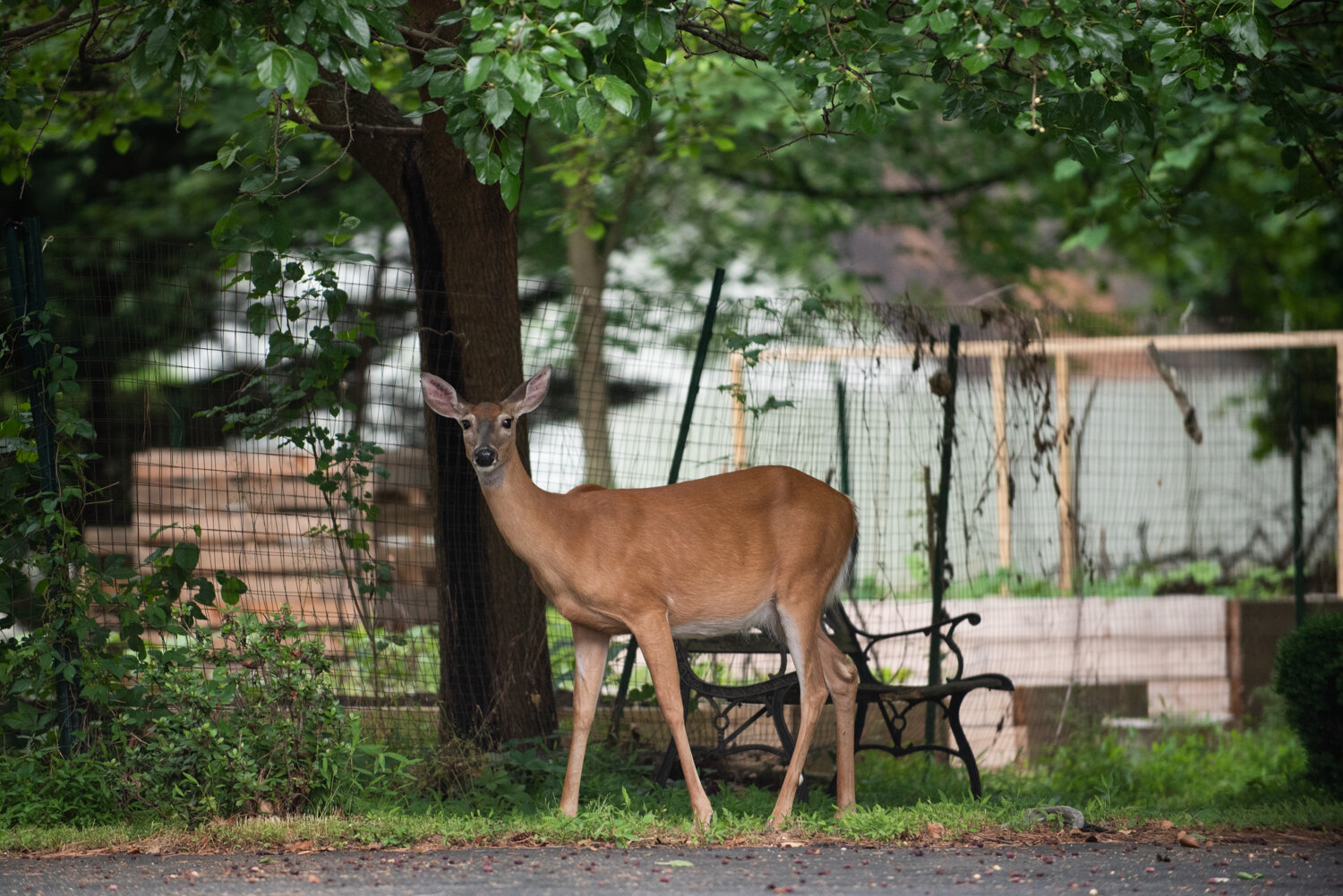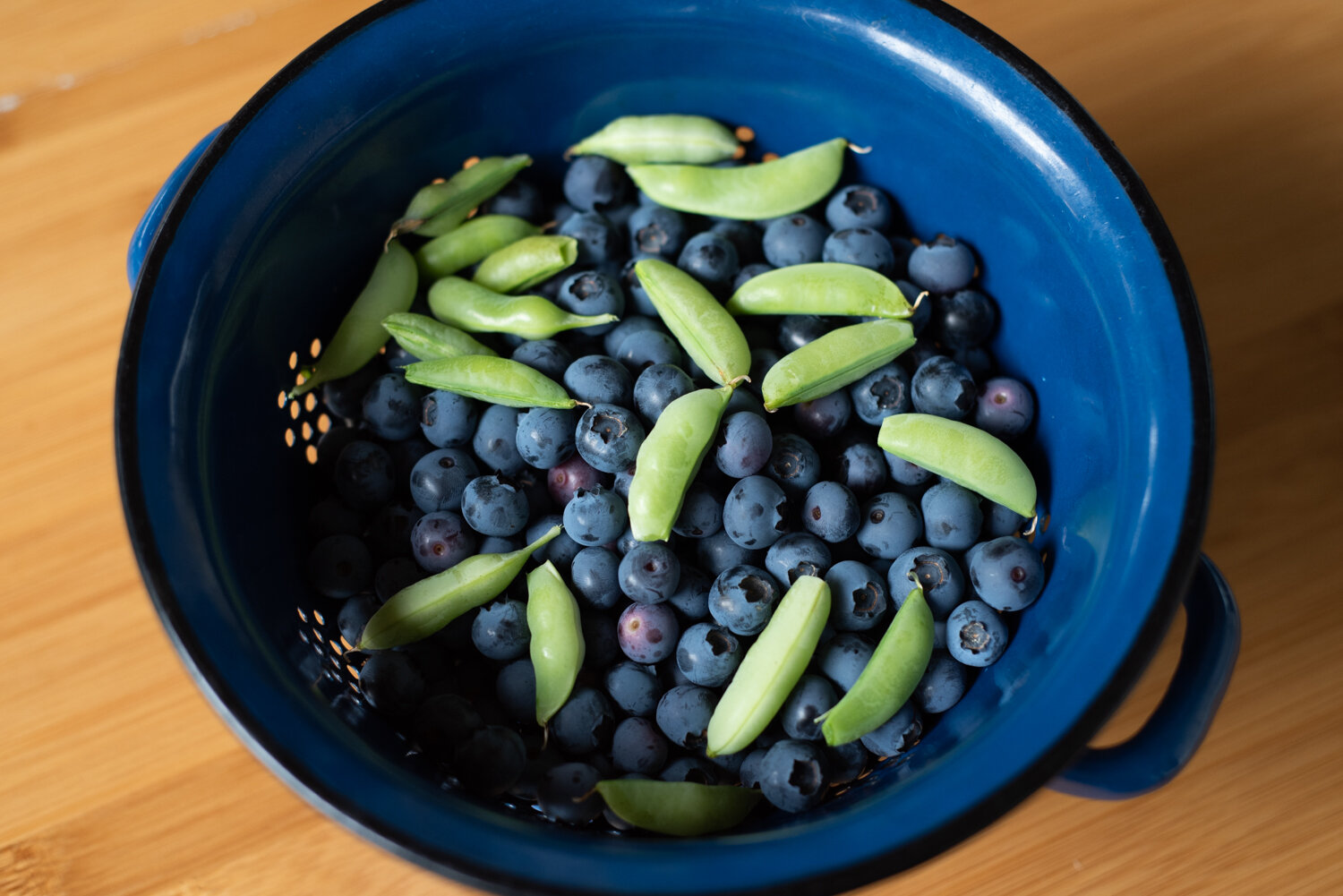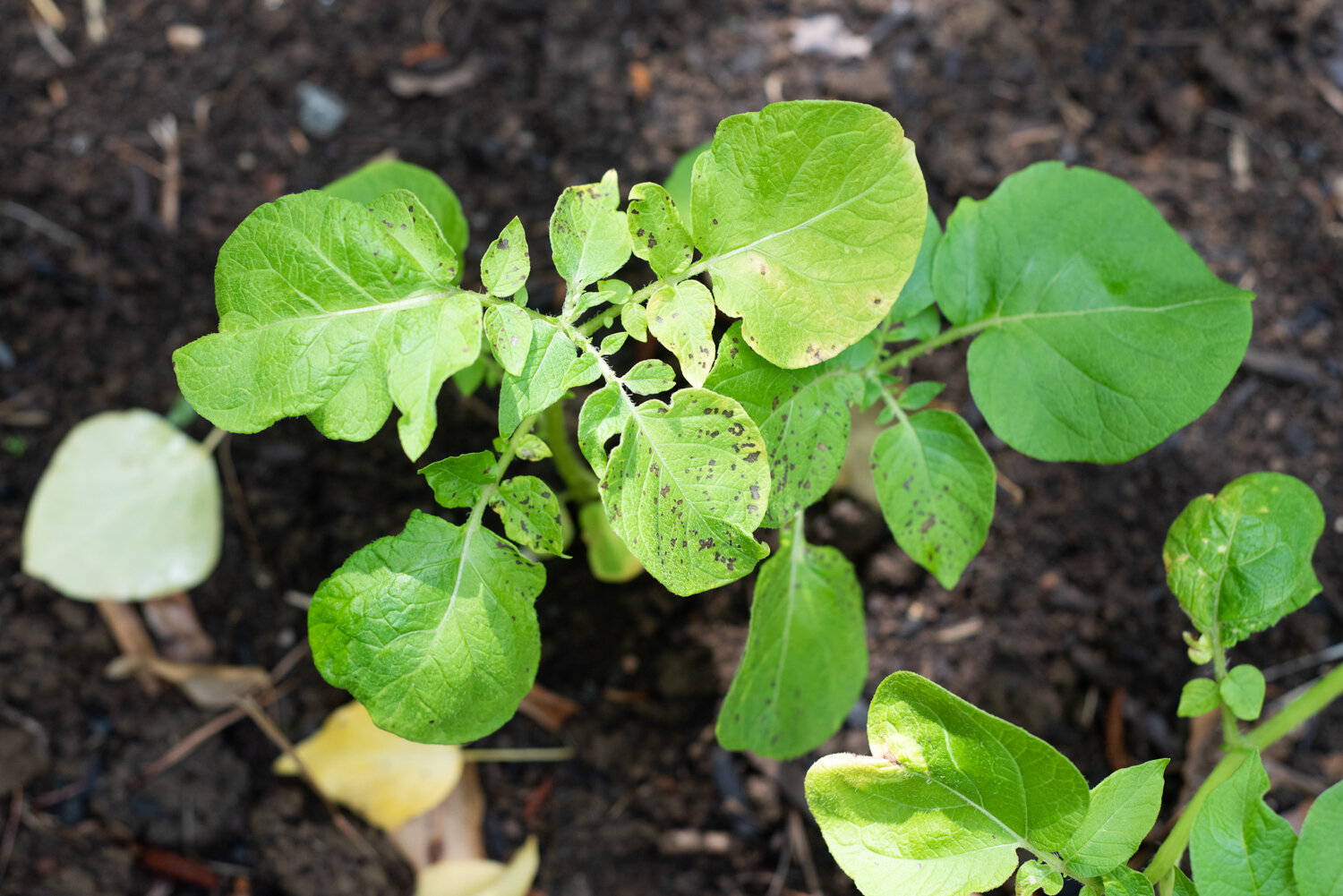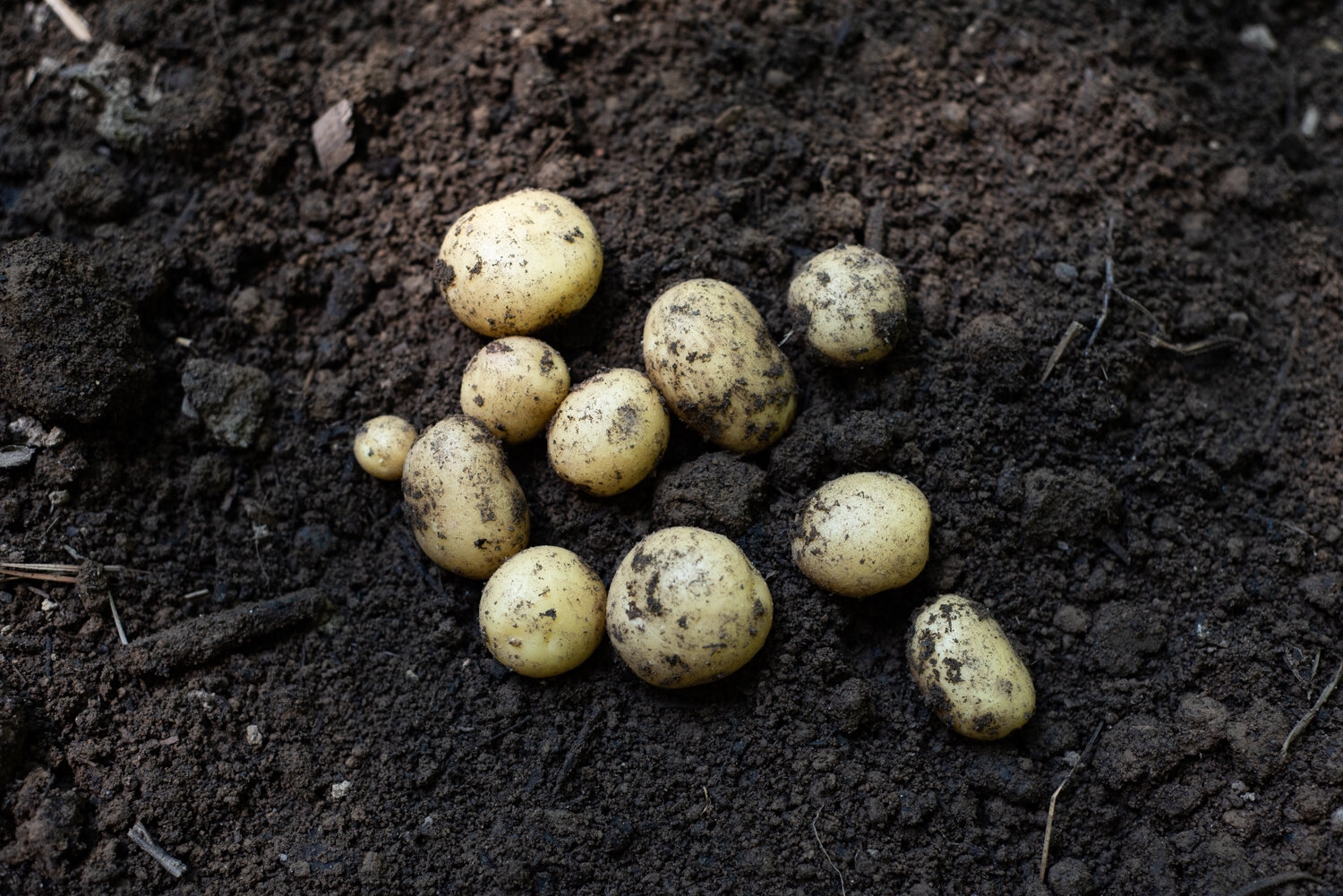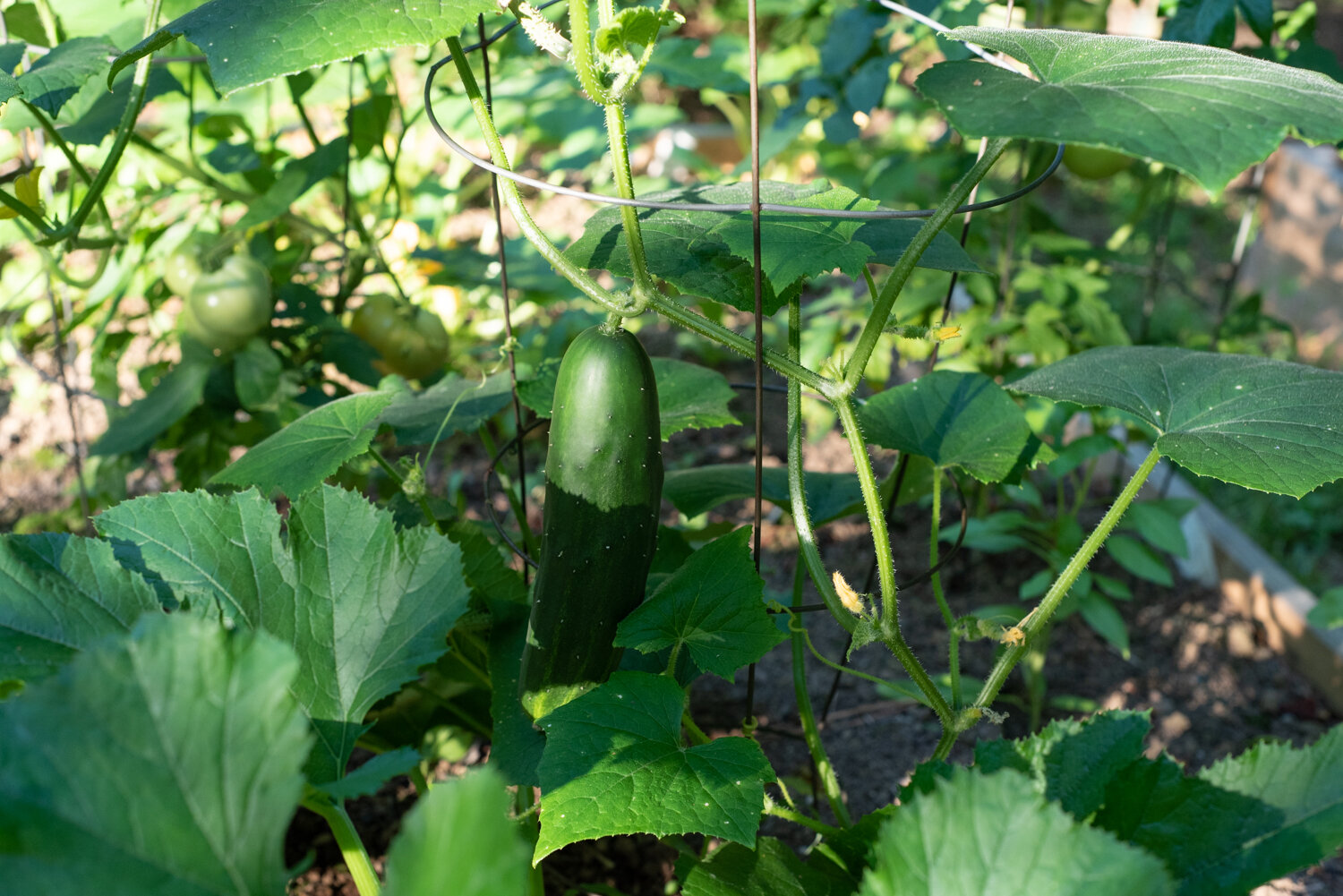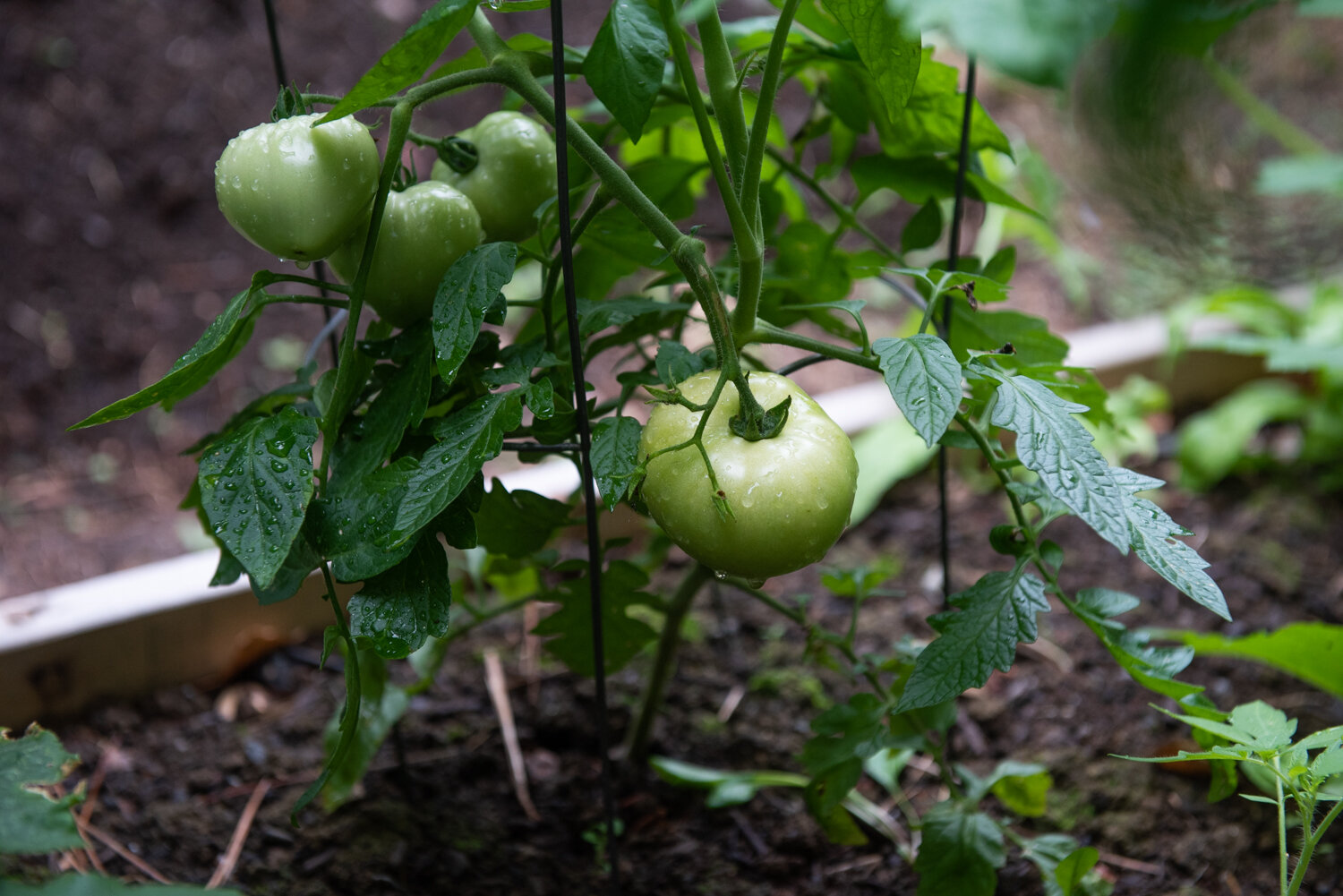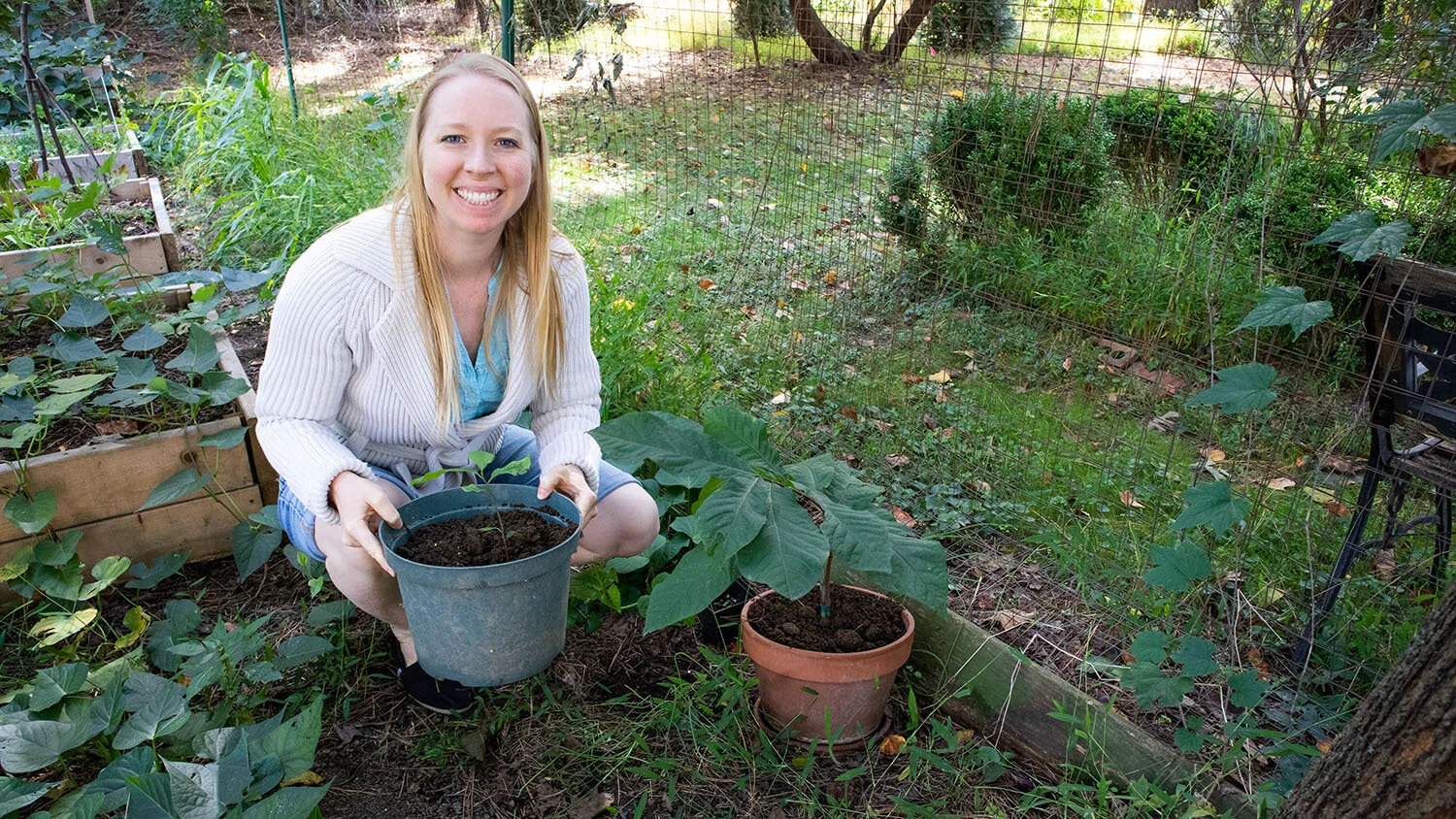Garden Tour // Summer 2020
Disclaimer: This post contains affiliate links, through which we earn a commission.
Now that we’re well into July, I want to provide an update on how things are going in the garden. As I've mentioned previously, although I've been gardening for the last 15 years or so, I haven't always had much success. As is all too often the case for gardening, my biggest issues have always been both weed and pest management. But last year, Wiehan and I finally did something about that and made a plan that we hoped would create a much more manageable garden space. And I am thrilled to report back that our plan has been a huge success! Read on to find out how we changed up the approach to our home gardening, and to learn about everything that's been growing!
Aside from two small garden boxes that Wiehan made me when we lived in South Africa in 2014, I have typically grown my plants directly in the ground, with a few plants here and there in pots. Last year, it occurred to me that my potted plants, and those plants in the SA garden boxes, grew much more successfully than the ones in the ground. This led to the idea of building garden boxes, a process that at first seemed incredibly daunting. Back in October, we made our first garden box, which we documented here. We ended up enjoying the process and loving the results so much, that we made 6 more boxes throughout the spring season, though the newer boxes are half the height of the original box. And we've even sold a few! If you live in the Northern Virginia region and would like your own Mountain Road box for your yard, prices are $99 per 8'x4'x11" box, Simply send us an email to place your order. When we'd maxed out our gardening budget, I turned to the hugelkultur technique, creating three large mounds with a combination of yard waste and compost / topsoil. But I've received comments from family that they look like ancient burial mounds, so there's that to consider in terms of aesthetics!
We mow and weed whack between the boxes, which is so much easier than trying to pull up the weeds manually. As a result, the garden looks so much better maintained, and we can even easily walk around garden. I used to feel all kinds of guilt about the run-down look of the garden, but now I just want to spend as much time there as possible, finding every excuse to water or look for pests or harvest veggies and berries. There is, however, one downside to the garden: the pesky mosquitoes. If I'm going to be out in the garden for longer than 5 minutes at a time, I have to put on long pants, long sleeves and closed toed shoes. Otherwise, I get covered with itchy mosquito bites. But otherwise, the pests have been less of an issue this year than in the past. I still have slugs that destroyed all my attempts at growing sunflowers. And they chomp on my greens. But with the garden so much more tidy and organized, I can spot them so much more easily now. I also have had some aphids, but not nearly to the extent that I've had in the past, where they've completely demolished my greens. I'm a little more kind to the slugs and go out of my way to transfer them from the garden to the compost on the other side of the house. However, I don't have mercy on the aphids, and instead squish them with my fingers. I've been pleasantly surprised to spot a few ladybugs in the garden for the first time!
I have two other bigger pests: squirrels and foxes. Every now and then, I go into the garden and discover signs of rodents digging for nuts. But the fox has been flat out rude! We have a mulberry tree at the front, right corner of the garden, which was very small when my family first planted the garden years ago. Now it has grown very tall and produces quite a bounty of berries! While I enjoy the fruit, I definitely don't recommend planting a mulberry tree so close to a veggie space, because it eventually casts too much shade and drops tons of berries that put off a fermented smell as they age, and then they proceed to grow lots of baby trees in the garden. Additionally, the mulberries attract all the deer in the neighborhood and they visit throughout the day for snacks. We have a tall fence that successfully keeps them out of the garden. The fox, however, also delights in the sweet fruit, leaving his scat behind on the driveway. But one day, I went into the garden and found that same scat in one of my garden boxes! Additionally, some pretty big holes had been dug in some of the boxes. How rude! But fortunately there wasn't too much damage done.
Now onto the most frequently asked question: What's growing in my garden?
Here's the long list, some purchased as seedlings and small plants, and some directly planted as seeds: blueberries, asparagus, kale, mizuna, mustard greens, beets, carrots, radishes, green beans, snap peas, sweet potatoes, Swiss chard, lavender, oregano, thyme, sage, rosemary, mulberries, turnips, marigolds, kohlrabi, cilantro, zucchini, yellow squash, basil, borage, calendula, cucumbers, tomatoes, strawberries, dill, chives, parsley, nasturtium, watermelon, butternut and spaghetti squash. Additionally, we have a fig tree and pawpaw tree, which are not yet mature enough to produce fruit.
A few of the blueberry plants have been in the garden since the beginning, and we've added a few over the years. They grow so well, without any issues at all, producing about a gallon of blueberries each year, as long as the weeds aren't suffocating them and they're getting enough water.
I planted the asparagus 3 years ago and it's also thriving, although I planted 16 baby plants at the time and we're down to 8. But I would also blame this on poor weed management, as well as planting them way too close to the blueberries. I transplanted 3 of them in early spring before they began sprouting, which has worked very well.
The kale was started last year, eaten up by aphids, overwintered and turned into a lovely, healthy plant by early spring. We harvested a beautiful bouquet of kale every week throughout the spring. I planted mizuna in the middle of winter and placed a clear plastic box over it, for frost protection at night. Neither the mizuna, nor the mustard greens offered many leaves before bolting as the weather warmed up. Perhaps I'll try these again at the end of summer.
We had a very cool spring and despite planting the lettuce, beets and radishes in early spring, they stayed small for quite some time. The beets are still very small and the radishes bolted without producing actual radish bulbs. The lettuce that I planted from seed is only now producing leaves big enough for salads, though some of them would also like to bolt, but I cut them early enough to slow down the process. Similarly to the beets and radishes, I'm doubtful that the kohlrabi or turnips will produce bulbs or that the carrot plants will actually produce carrots. But in the meantime, the plants at least have healthy leaves. The potatoes also have had some issues, with yellowing, spotted leaves, stunted growth and prematurely dying plants. I did harvest about 2 pounds of beautiful baby potatoes from the plants that already died. Between the issues with the bulbous vegetables and the potatoes, this is probably a good indicator that the soil has some nutrition deficiencies. From some searching, it looks like a phosphorous deficiency could be the main contributing factor. Bonemeal is a good source of phosphorous, so I applied this to the soil a few days ago and hope that it will benefit the plants.
I have over 30 sweet potato plants, produced from just one tuber! Those plants are very happy, beginning to fan out, ready for some greens to be harvested. If you’d like to learn how to grown your own sweet potatoes, here’s a video that I made on the process. The snap peas and green beans have produced a few handfuls of delicious veggies.
The chard is growing very well, but it, along with the turnips greens, has been the greatest aphid attractor, so I check them often. The lavender, oregano, parsley, rosemary, sage, thyme are all very happy, aside from when Polly the cat sits on them. She loves herbs with a passion! The cilantro produced one nice bunch of fresh herbs for the kitchen, but hasn't been very happy since then, also trying to bolt. The dill hasn't been too happy either. The borage began showing off their gorgeous blooms last week, bringing so much delight to the garden! The basil is also growing very well. The marigolds and calendula are growing, but don't yet have flowers. And the nasturtium is hanging in there.
I have one cucumber that's just about ready to eat, and several green tomatoes. The zucchini and summer squash plants look great, but have yet to produce squash. All the other squash, watermelon plants and okra are all still too young for harvesting.
As is seen in this video, I planted a fig tree sapling in the spring. And last September, I purchased pawpaw tree sapling, which I discuss in this video. Both trees are from Edible Landscaping. I planted the pawpaw in a small pot and left it outside throughout the winter. Since it's native to this region, I thought it could handle the frigid temperatures, but became worried when all the leaves fell in late autumn, leaving behind a sad-looking twig, with one very minuscule, brown bud at the top. When spring arrived, the pawpaw continued to look hopeless. But one day in late spring, I saw that the bud had slightly opened, revealing a barely noticeable spot of green inside. Now that it's midsummer, the pawpaw is health and happy, with about 7-9 beautiful big leaves!
I have a lot of edible weeds as well, but the mowing certainly cuts down on how many are really allowed to grow. Dandelions, lamb’s quarters, goldenrod, wild violets, broadleaf plantains, curly dock and chickweed. I have yet to try most of these, but love lamb's quarters, raw or cooked, and I added wild violets to salads in the spring. I also gave chickweed a try this year. It's pretty messy, but tastes good.
All in all, this is a very successful year for the garden and it brings me so much joy! We'll definitely be sticking with the garden boxes in the future. I hope that by sharing my learning experiences, I can help others to bring that joy to their own homes, even if space is limited to a balcony or windowsill garden. If you are growing some of your own plants at home, please share all about it in the comments!
- Christin


